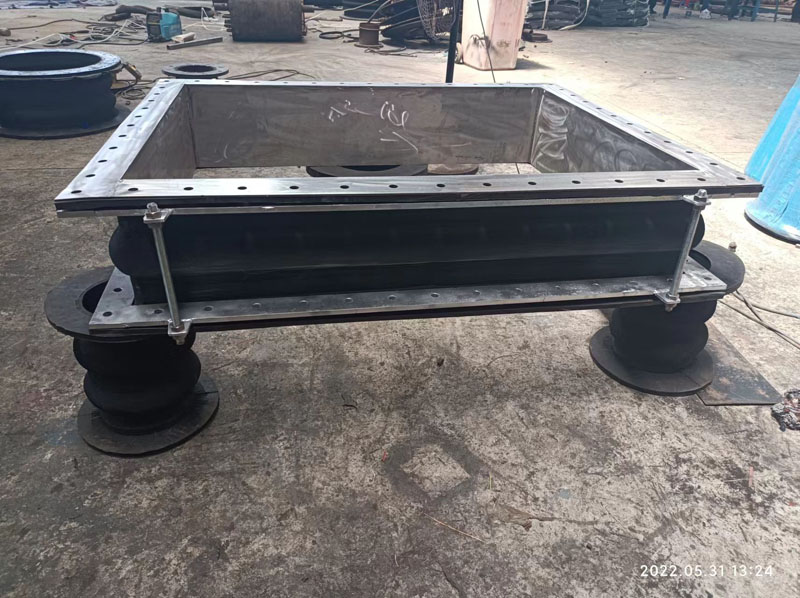


Soft connections can be made from a variety of materials, including rubber, silicone, PVC, and neoprene. The choice of material will depend on the specific application and the environmental factors it will be exposed to.
Soft connections are often used in HVAC systems, plumbing, and other types of piping systems to help absorb vibration and movement and prevent damage to the system. They are also frequently used in power generation and manufacturing facilities to connect equipment and absorb vibrations.
The primary benefits of using soft connections in construction are increased flexibility and durability. Soft connections are designed to withstand thermal expansion and contraction, which can help to prevent damage to the system and prolong its lifespan. They can also absorb vibration and movement, which can help to reduce noise and prevent damage to nearby structures.
Soft connections are typically installed using clamps or other types of fasteners. The specific installation method will depend on the type of connection and the application.
Over time, soft connections can wear out or become damaged due to exposure to environmental factors such as heat, cold, moisture, and chemicals. Regular inspection and maintenance can help to identify and address these issues before they cause any problems.
In conclusion, soft connections are a versatile and durable type of joint that can help to prevent damage and prolong the lifespan of construction systems. By using soft connections, builders and engineers can ensure that their systems are flexible, durable, and able to withstand the challenges of the environment. Hebei Fushuo Metal Rubber Plastic Technology Co., Ltd. is a leading manufacturer of high-quality soft connections and other types of rubber products. Our products are made from the highest quality materials and are designed to meet the strictest industry standards. With years of experience, we have established a reputation for excellence and innovation in the industry. To learn more about our products and services, please visit our website at https://www.fushuorubbers.com. For inquiries or orders, please contact us at 756540850@qq.com.
1. Kim, Y., et al. (2012). "Experimental investigation of seismic performance of piping systems with rubber-welded joints." Nuclear Engineering and Design. Vol. 252, pp. 145-151.
2. Zhao, C. and Li, Y. (2017). "Experimental investigation of the mechanical properties of rubber joints for bridge expansion joints." Journal of Bridge Engineering. Vol. 22, No. 9, Article ID 04017051.
3. Das, R., et al. (2015). "Dynamic analysis of a piping system with an elastomeric flexible joint." Journal of Vibration and Control. Vol. 21, No. 12, pp. 2439-2453.
4. Lv, X., et al. (2016). "Mechanical analysis of a rubber flexible joint for an oil hose." Journal of Materials in Civil Engineering. Vol. 28, No. 5, Article ID 04015152.
5. Yazdani, M., et al. (2019). "Dynamic characterization of elastomeric flexible joints and numerical modeling of joints installed in piping systems subjected to seismic excitation." Journal of Mechanical Science and Technology. Vol. 33, No. 8, pp. 4059-4066.
6. Wang, H., et al. (2014). "Research on the damping property of rubber joints." Journal of Applied Polymer Science. Vol. 131, No. 16, Article ID 40485.
7. Zhang, Z., et al. (2015). "A novel metallic-rubber composite joint for vibration reduction." Journal of Sound and Vibration. Vol. 346, pp. 263-273.
8. Zhao, X., et al. (2018). "Seismic performance analysis of pipeline systems with rubber flexible joints subjected to multi-component earthquake ground motions." Frontiers of Structural and Civil Engineering. Vol. 12, No. 3, pp. 319-330.
9. Wang, Y., et al. (2019). "Design and research of flexible rubber joint with large deflection and high torsion." Journal of Mechanical Engineering Research. Vol. 11, No. 2, pp. 21-31.
10. Kausel, E., et al. (2013). "Dynamic analysis of fluid-filled piping systems with resilient joints." Journal of Engineering Mechanics. Vol. 139, No. 3, pp. 324-332.